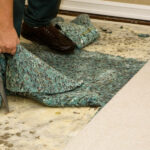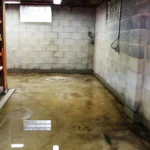The Problems with Having Wet Drywall in Your Basement
What You Need to Know About Drywall
Drywall is commonly used in modern homes for walls and ceilings due to its versatility and cost-effectiveness. It’s constructed by encasing a wet gypsum plaster core within sheets of heavy paper or fiberglass, then hardening it through heat. Although it’s lighter than traditional materials like stone, wood, or concrete, applying plaster to its surface can improve its durability.
Pros of Drywall
- Quick, easy, and cost-effective to manufacture
- Simple and fast to install
- Fire-resistant due to the gypsum core
- Easy to modify or remove
Cons of Drywall
- Not water-resistant
- Prone to damage without a plaster finish
- Messy to install
- Joints may become visible over time
If your home already has drywall, the best way to avoid damage is by protecting it from moisture and humidity.
What Causes Wet Drywall?
When indoor humidity reaches 100%, moisture forms as condensation on cool surfaces. While condensation alone can be problematic, it’s even more so when it settles into drywall cracks, causing damage to accumulate.
In each of these cases, addressing the root cause is essential for protecting your drywall and preventing further issues.




